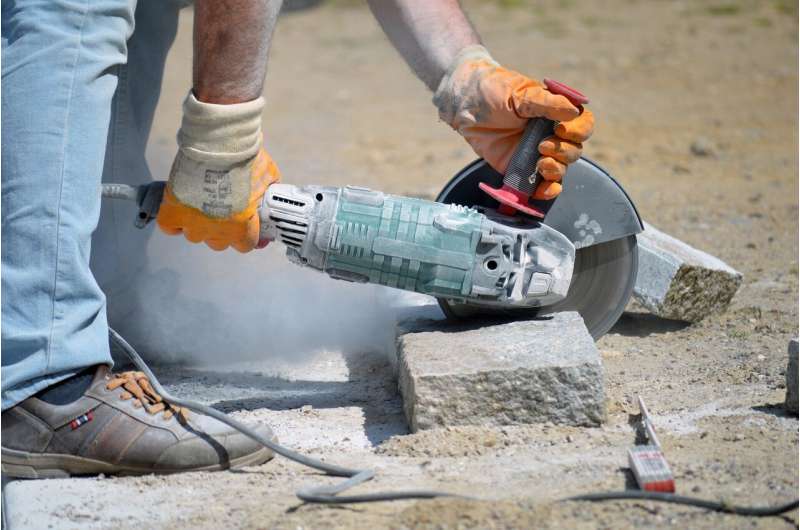This article has been reviewed according to Science X's editorial process and policies. Editors have highlighted the following attributes while ensuring the content's credibility:
fact-checked
peer-reviewed publication
trusted source
proofread
Silica is not the only hazard in engineered stone

While some engineered stone producers are promoting reduced-silica or silica-free products due to health concerns, researchers have found other substances in the material are damaging workers' lungs.
"This was the first worldwide study to assess the composition of more than 50 engineered stone products to identify which components pose the greatest risk to lung health," said Dr. Chandnee Ramkissoon, from the University of Adelaide's School of Public Health, who led the study.
"Our research showed engineered stone's metal components may also be hazardous to lung health. In particular, cobalt and aluminum have been associated with lung inflammation."
Researchers from the University of Adelaide and the University of Tasmania exposed human lung cells to respirable dust from 50 resin-based engineered stones, three natural stones and two non-resin-based materials for the study, now published in the journal Respirology.
"Unlike natural stone, engineered stone emissions contained up to 20% resin, and during cutting and grinding there is the potential for resin to break down and generate harmful chemicals such as styrene," Dr. Ramkissoon said.
"This potential for co-exposure to various hazards has significant implications for new stone alternatives emerging on the market—particularly reduced-silica or silica-free stones. There are a lot of unknowns about the safety of these products."
Previous research from the School of Public Health's Adelaide Exposure Science and Health laboratory, led by Associate Professor Sharyn Gaskin, showed processing engineered stone can lead to exposure to very high levels of respirable crystalline silica (RCS), which is a carcinogen.
Silicosis, the disease that develops from exposure to RCS, had largely been eliminated in Australia before the advent of engineered stone. And previously, it would take decades to develop into more serious conditions, like cancer and fibrosis.
However, occupational silicosis from engineered stone develops much faster.
"The form of disease in this occupational group is very severe, characterized by a short latency period and rapid progression to fibrosis and cancer, developing after only a few years of exposure to engineered stone dusts," said Dr. Ramkissoon.
In July this year, Dr. Ramkissoon and her team delivered a report to Safe Work Australia , which contributed to the organization's recommendation of a complete prohibition on the use of engineered stone.
Since that recommendation, furniture and hardware companies Ikea and Bunnings have banned engineered stone products linked to silicosis from their product range.
Dr. Ramkissoon hopes this new research will lead to the meaningful regulation of the production of engineered stone which fully accounts for the dangerous materials it contains, protecting workers from entirely preventable occupational lung diseases.
"The Stone Industry is currently aggressively marketing 'safer' alternatives to engineered stone," said Dr. Ramkissoon.
"Our research cautions against such claims and proposes further research to understand fully the risks workers are exposed to in the silica dust-generating industries, such as the stone benchtop industry."
More information: Chandnee Ramkissoon et al, Understanding the pathogenesis of engineered stone‐associated silicosis: The effect of particle chemistry on the lung cell response, Respirology (2023). DOI: 10.1111/resp.14625




















